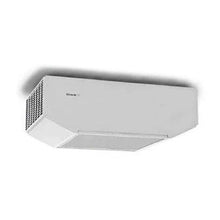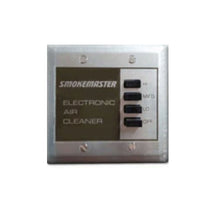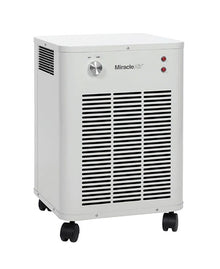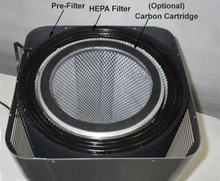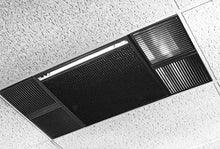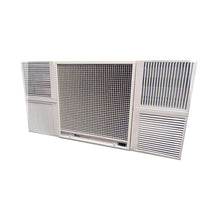Beyond Compliance: Achieving Superior Air Quality in Smoking-Permitting Establishments
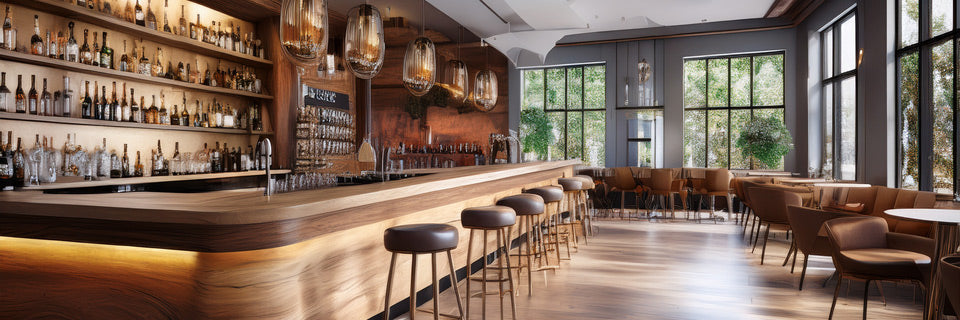
Beyond Compliance: Achieving Superior Air Quality in Smoking-Permitting Establishments
The rich aroma of a fine cigar or the comforting haze of a shared hookah can define the ambiance of a specialized smoking lounge. For enthusiasts, these spaces offer a sanctuary, a place to unwind and connect. However, for owners and operators, this unique environment presents a complex challenge: how to maintain an inviting atmosphere while ensuring the highest standards of indoor air quality for both patrons and staff. It’s a delicate balance, one that goes far beyond merely meeting the baseline smoking lounge air quality regulations. In today's health-conscious world, achieving superior smoke removal isn't just about avoiding penalties; it's about safeguarding health, enhancing comfort, and cultivating a reputation for excellence.
The reality is that traditional ventilation systems, while necessary, often fall short of completely neutralizing the particulate matter, volatile organic compounds (VOCs), and odors associated with tobacco and other smokeable products. Patrons might leave with their clothes smelling of stale smoke, and staff members, exposed for extended periods, could face long-term health risks. This concern isn't lost on the public, and businesses that proactively address these issues stand to gain a significant competitive advantage. We at Commercial Air Purifiers, LLC understand that your commitment to creating an exceptional experience extends to every breath your customers take. This article will delve into the science of smoke removal and present a comprehensive approach to elevating air quality in your establishment, transforming a potential health concern into a hallmark of your brand's dedication to wellness.
The Unseen Challenge: Understanding Smoke Composition and Its Impact
To truly achieve superior air quality, we must first understand the enemy: smoke. Far from being a simple, uniform substance, smoke from cigars, cigarettes, and hookahs is a complex aerosol mixture containing thousands of different compounds. These include particulate matter (PM2.5 and ultrafine particles), which are microscopic solids and liquid droplets that can penetrate deep into the lungs; noxious gases like carbon monoxide, formaldehyde, and ammonia; and a vast array of volatile organic compounds (VOCs) that contribute to lingering odors and can have adverse health effects.
The health implications of exposure to secondhand smoke are well-documented. According to the Centers for Disease Control and Prevention (CDC), there is no safe level of exposure to secondhand smoke. It contains more than 7,000 chemicals, including hundreds that are toxic and about 70 that can cause cancer. Patrons lingering in a smoking establishment, even if not actively smoking, are exposed to these harmful substances. For employees, who spend hours daily in these environments, the risk is significantly elevated. Chronic exposure can lead to respiratory illnesses, cardiovascular problems, and an increased risk of various cancers. This underscores the critical need for robust health and safety in smoking areas beyond mere regulatory compliance. It's about providing a safe working environment and a comfortable, healthy experience for every visitor. Ignoring these risks not only jeopardizes well-being but can also lead to reputational damage and potential legal liabilities for businesses.
Moving Beyond Basic Compliance: The Limitations of Standard Ventilation
Many establishments believe that simply adhering to local smoking lounge air quality regulations regarding ventilation is sufficient. While essential, these regulations often represent the minimum standard, a baseline to prevent immediate and severe health crises. Standard HVAC (Heating, Ventilation, and Air Conditioning) systems are designed primarily for temperature control and general air circulation, exchanging indoor air with outdoor air. While this helps dilute pollutants, it rarely eliminates them completely, especially in environments with constant, heavy smoke generation. The sheer volume and density of smoke particles often overwhelm conventional systems, leaving behind residual odors and harmful particulate matter.
Consider a typical scenario: a smoking lounge with a powerful exhaust fan. While this fan expels a significant amount of smoke, it simultaneously creates a negative pressure environment, drawing in unfiltered air from other parts of the building or even outside, potentially bringing in other pollutants. Moreover, the effectiveness of ventilation is highly dependent on factors like room layout, air currents, and the number of active smokers. Dead zones, where air stagnates, are common, allowing smoke to linger and settle on surfaces, contributing to persistent odors and poor air quality. Relying solely on these systems is akin to bailing out a sinking ship with a teacup – it helps, but it doesn't solve the fundamental problem. For establishments committed to excellence, a more sophisticated, multi-layered approach to superior smoke removal is not just desirable but imperative. It demonstrates a proactive commitment to health and safety in smoking areas that differentiates a business from its competitors.
The Science of Superior Smoke Removal: A Multi-Layered Approach
Achieving truly superior air quality in a smoking-permitting establishment requires a strategic, multi-layered approach that goes beyond basic ventilation. It integrates advanced air purification technologies designed to capture and neutralize the diverse components of smoke. At Commercial Air Purifiers, LLC, we advocate for a comprehensive system that targets both particulate matter and gaseous pollutants effectively.
High-Efficiency Particulate Air (HEPA) Filtration
The cornerstone of effective smoke removal is HEPA filtration. These filters are designed to capture 99.97% of airborne particles as small as 0.3 microns, including the vast majority of smoke particles, dust, pollen, and pet dander. The mechanism involves a dense mat of randomly arranged fibers that trap particles through impaction, interception, and diffusion. For smoke, which contains a high concentration of fine and ultrafine particles, HEPA filters are indispensable. Their effectiveness in removing these microscopic irritants significantly reduces the visible haze and the physical health risks associated with inhaled particulate matter.
Activated Carbon Adsorption for Odors and VOCs
While HEPA filters excel at particulate removal, they do not effectively remove gases or odors. This is where activated carbon comes into play. Activated carbon is a highly porous material with a massive internal surface area, often treated with oxygen to open up millions of tiny pores between the carbon atoms. This structure allows it to chemically bond with and trap gaseous molecules, a process known as adsorption. Smoke contains numerous volatile organic compounds (VOCs) and other gaseous pollutants responsible for the lingering, stale smell. Activated carbon filters are highly effective at adsorbing these molecules, eliminating odors and reducing the concentration of harmful gases like formaldehyde, benzene, and ammonia. The combination of HEPA and activated carbon filtration provides a powerful one-two punch against the dual threat of particulate and gaseous smoke components.
UV-C Light for Sterilization (Optional, but Beneficial)
For an added layer of protection, particularly in establishments where patrons may share devices like hookahs, UV-C germicidal irradiation can be beneficial. UV-C light, a specific wavelength of ultraviolet light, has been scientifically proven to destroy the DNA and RNA of airborne microorganisms, including bacteria, viruses, and mold spores. While not directly targeting smoke particles or gases, integrating UV-C into an air purification system can help sterilize the air, further enhancing the health and safety in smoking areas by reducing the transmission of airborne pathogens. This technology provides an additional layer of assurance, especially important in high-traffic commercial environments.
The Role of Commercial Air Purifiers, LLC in Elevating Your Air Quality
At Commercial Air Purifiers, LLC, we bring years of experience and deep expertise to the challenge of creating clean, healthy air in complex commercial settings. Our knowledge is built on a foundation of scientific research and practical application, ensuring our solutions are as effective as they are reliable. We understand that a "one-size-fits-all" approach simply doesn't work when it comes to commercial air purifier compliance and achieving true superior smoke removal.
Our approach is guided by a commitment to the latest industry standards and scientific findings. For instance, we closely follow peer-reviewed studies, such as the one published in Indoor Air by S. A. Nabavizadeh et al. (2018), which highlights the efficacy of multi-stage air filtration systems in reducing indoor particulate matter and harmful gases. This type of research underpins our product development and our recommendations to clients. Similarly, our work is informed by the authoritative guidance of institutions like the World Health Organization (WHO), which consistently emphasizes the importance of improving indoor air quality to protect public health. This reinforces the critical need for advanced solutions beyond basic ventilation in all indoor environments, especially those with known pollutants like smoke.
By grounding our recommendations in this authoritative, transparent information, we build trust with our clients. When partnering with Commercial Air Purifiers, LLC, businesses are investing in more than just a product; they are investing in a healthier environment, a better customer experience, and a stronger brand reputation. Our team provides solutions that not only meet but exceed smoking lounge air quality regulations, setting a new benchmark for cleanliness and comfort.
Implementing Superior Air Quality: Practical Steps and Considerations
Transforming your smoking-permitting establishment into an oasis of clean air involves several practical steps and considerations. It's not just about installing equipment; it's about integrating a comprehensive air quality strategy into your operational framework.
First, assess your current air quality. Before making any investment, understanding your baseline is crucial. This can involve professional air quality testing to identify specific pollutant levels, including PM2.5, VOCs, and carbon monoxide. This data will inform the type and capacity of the air purification system required.
Second, strategic placement of air purifiers is key. Merely installing a few units randomly will not yield optimal results. For instance, a study published in Environmental Science & Technology by H. W. Lee et al. (2019) demonstrated how the strategic placement of air purifiers can significantly impact their effectiveness in reducing indoor air pollution. Our team at Commercial Air Purifiers, LLC works to design a system that considers airflow patterns, the location of smoking zones, and the overall layout of your establishment to ensure maximum coverage and efficiency. This often involves combining ceiling-mounted, wall-mounted, and freestanding units to create a cohesive air cleaning network.
Third, consider zoned purification. In larger establishments or those with distinct smoking and non-smoking areas (even if smoke migrates), a zoned approach can be highly effective. This involves deploying higher-capacity or more numerous air purifiers in the primary smoking zones and maintaining a slightly positive pressure in adjacent non-smoking areas to prevent smoke intrusion.
Fourth, regular maintenance is non-negotiable. Even the most advanced air purification system will lose effectiveness if not properly maintained. This includes routine filter changes for both HEPA and activated carbon filters, as well as periodic cleaning of the units themselves. We provide comprehensive maintenance schedules and support to ensure your system continues to perform at its peak, guaranteeing continuous superior smoke removal. Neglecting maintenance can quickly render your investment ineffective, allowing air quality to degrade rapidly.
Finally, educate your staff and patrons. Transparent communication about your commitment to air quality not only builds trust but also encourages responsible behavior. Inform your staff about the importance of the air purification system and proper maintenance. Consider displaying signage that highlights your advanced air quality measures, reassuring patrons that their health and safety in smoking areas is a top priority. This demonstrates a proactive stance and enhances your establishment's reputation for genuine care and consideration.
Conclusion: A Breath of Fresh Air for Your Business
In the dynamic landscape of commercial establishments, going "Beyond Compliance" with air quality is no longer just an option; it's a strategic imperative. For smoking-permitting venues, the commitment to superior smoke removal and exceptional health and safety in smoking areas directly translates into enhanced customer experience, improved employee well-being, and a robust, positive brand image. Simply meeting minimum smoking lounge air quality regulations is a baseline, but true leadership lies in creating an environment where air quality is a distinguishing feature, not an afterthought.
By understanding the complexities of smoke, embracing advanced air purification technologies like those championed by Commercial Air Purifiers, LLC, and implementing a thoughtful, multi-layered strategy, businesses can transform a challenging environment into a truly inviting and healthy space. Our dedication to providing well-researched, practical solutions ensures our recommendations are not just effective but also meticulously tailored to your unique needs. Invest in superior air quality, and you invest in the future success and reputation of your establishment. Contact Commercial Air Purifiers, LLC today to discover how our solutions can help you achieve a truly clean and inviting atmosphere that keeps patrons coming back for more.
Frequently Asked Questions About Commercial Air Quality
Q: How often do HEPA and activated carbon filters need to be replaced in a commercial setting?
A: The lifespan of filters in a commercial smoking establishment can vary significantly depending on the volume of smoke, the size of the area, and the specific purifier model. However, generally, HEPA filters in such demanding environments might need replacement every 6-12 months, while activated carbon filters, which absorb odors and gases, might require replacement more frequently, perhaps every 3-6 months. Regular monitoring of air quality and following the manufacturer's recommendations are crucial.
Q: Can air purifiers completely eliminate the smell of smoke?
A: While a high-quality air purification system with robust activated carbon filtration can significantly reduce and often virtually eliminate the lingering smell of smoke, 100% eradication in a continuously smoking environment is challenging. The goal is to reduce odors to an imperceptible level for the average patron and to prevent them from clinging to clothing and furnishings. A combination of strong ventilation and advanced air purification offers the best results.
Q: Are there specific air purifiers designed for very large smoking lounges or casinos?
A: Yes, absolutely. Commercial Air Purifiers, LLC specializes in industrial-grade air purification systems designed for large, open-plan spaces, including casinos, dedicated smoking lounges, and entertainment venues. These systems often involve multiple, strategically placed high-capacity units, or integrated HVAC purification modules, ensuring comprehensive air treatment across vast areas. Our solutions are scalable and customized to the specific dimensions and smoke load of each unique commercial environment.
Q: How do commercial air purifiers help with regulatory compliance?
A: Commercial air purifiers play a critical role in helping establishments meet and often exceed smoking lounge air quality regulations. While regulations typically mandate specific ventilation rates, advanced air purification systems further reduce particulate matter and gaseous pollutants that ventilation alone cannot adequately address. By significantly lowering the concentration of harmful substances, these systems help businesses demonstrate a proactive commitment to environmental health and safety, potentially avoiding fines and improving their standing with local health authorities.
Q: What is the benefit of integrating UV-C light into a commercial air purifier for a smoking area?
A: While HEPA and activated carbon address smoke particles and gases, UV-C light targets airborne biological contaminants. In environments where people gather and share amenities, such as hookahs, there's a potential for the spread of bacteria and viruses. Integrating UV-C light helps sterilize the air, reducing the presence of these pathogens and enhancing the overall health and safety in smoking areas by providing an additional layer of protection against airborne illness transmission.
Author Bio: This blog post was written by Commercial Air Purifiers, LLC, a leader in commercial air purification solutions. With years of experience and a deep understanding of air quality science, we are dedicated to helping businesses create healthier, safer, and more inviting indoor environments. Our commitment to innovation and customer satisfaction drives us to deliver the most effective and reliable air purification systems on the market.
Publication Date: October 26, 2023
Sources:
-
Nabavizadeh, S. A., et al. (2018). "Impact of a multi-stage air filtration system on indoor particulate matter and gaseous pollutants." Indoor Air, 28(6), 940-951. https://onlinelibrary.wiley.com/doi/full/10.1111/ina.12484
-
Lee, H. W., et al. (2019). "Optimization of air purifier placement for effective reduction of indoor particulate matter." Environmental Science & Technology, 53(18), 10834-10842. https://pubs.acs.org/doi/10.1021/acs.est.9b02787
-
World Health Organization. (Updated Regularly). "WHO guidelines for indoor air quality." https://www.who.int/news-room/fact-sheets/detail/indoor-air-pollution-and-health

